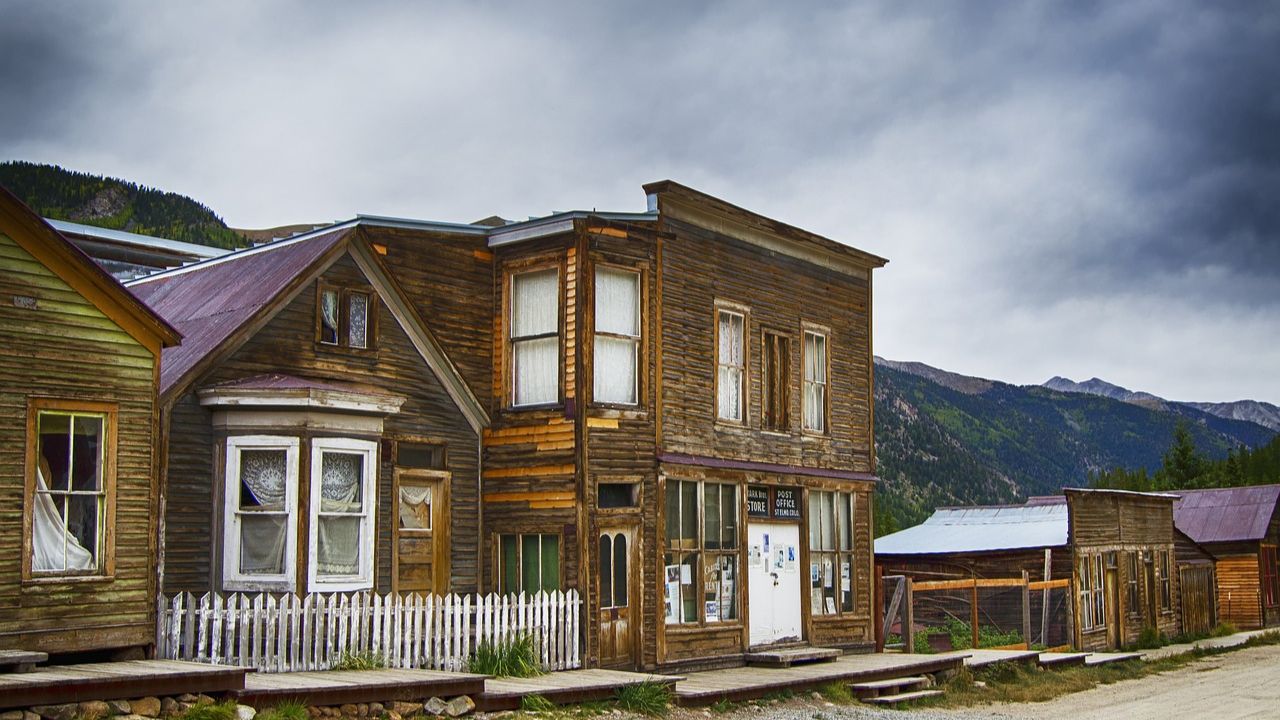A remnant of a bygone era, nestled within the rugged terrain of the Rocky Mountains, is a silent witness to the history of mining in the American West. The ghost town, once a vibrant hub of industry and community, now stands as a haunting reminder of the boom-and-bust cycle that shaped the region. In this exploration, we explore the rich tapestry of Rocky Mountain mining history, tracing the rise and fall of forged towns in search of precious metals and the lasting legacy they left behind.
Table of Contents
A Legacy Carved in Stone
The story of mining history in the Rocky Mountains begins long before the arrival of European settlers. Native Americans, including the Ute, Arapaho, and Shoshone, were the first to recognize the rich mineral wealth hidden within these rugged peaks. Over the centuries, they extracted minerals such as obsidian and hematite for tools and ornaments, which formed the basis of later mining efforts.
The Gold Rush Era
The discovery of gold in the Rocky Mountains in the mid-19th century sparked a frenzied rush of prospectors to reclaim their fortunes. The Pike’s Peak Gold Rush of 1859, centered around present-day Colorado, attracted thousands of miners eager to strike it rich. Towns like Central City and Black Hawk sprung up virtually overnight, catering to an influx of fortune-seekers in saloons, brothels, and gambling halls.
Silver Booms and Busts
As the gold rush subsided, the Rocky Mountains experienced a silver rush in the late 19th century. The discovery of large silver deposits in places like Leadville, Colorado and Park City, Utah spurred another wave of mining activity. Towns expanded rapidly as miners descended on the region, lured by the promise of silver fortunes. However, the boom was short-lived, and many communities experienced economic collapse in the 1890s when the price of silver fell.
Rise of Company Towns
As mining operations were consolidated by large corporations, the landscape of mining towns in the Rocky Mountains began to change. Company towns, such as Victor in Colorado and Bingham Canyon in Utah, emerged as centers of industrial activity, influenced by the interests of mining companies. These towns were often run under company control, with workers living in company-owned housing and patronizing company-owned shops.
The Decline and Abandonment
Despite periods of prosperity, the mining industry in the Rocky Mountains faced numerous challenges, including labor disputes, environmental degradation, and fluctuating commodity prices. As mines depleted and technology developed, many towns fell to the brink of destruction. By the mid-20th century, many mining communities had been abandoned, their once bustling streets now eerily deserted.
Exploring Ghost Towns
Today, legacies of the mining history of the Rocky Mountains live on in ghost towns scattered throughout the region. These silent witnesses of the past offer a glimpse of a bygone era, where dilapidated buildings, rusting machinery and crumbling infrastructure stand as a testament to the resilience of those who once tried to make these places home. Visitors can explore ghost towns like St. Elmo in Colorado, Garnet in Montana, and Bodie in California, marveling at the ingenuity and tenacity of those who make a living in these harsh landscapes.
Preserving the Past
As interest in historic site preservation grows, efforts are underway to preserve and interpret the legacy of mining history in the Rocky Mountains. Organizations such as the National Park Service and local historical societies work to maintain and restore ghost towns, ensuring that future generations can appreciate their significance.Interpretive signs, guided tours, and educational programs help bring the stories of these forgotten communities to life, fostering a deeper understanding of past challenges and triumphs.
The ghost towns of the Rocky Mountains stand as poignant reminders of the human effort and sacrifice that shaped the American West. From the hopeful prospectors of the Gold Rush era to the laborers of the Industrial Age, each generation has left its mark on the landscape, contributing to the rich tapestry of mining history that defines the region. As we explore these abandoned ruins, we are invited to reflect on the enduring legacy of the past and to consider the lessons they hold for the future as we discover and learn more.

